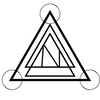In the 1940s, a time when racism toward the Mexican was too common in the United States, a Mexican subculture emerged, seeking to enforce itself on foreign soil. Los Pachucos.
The origin of this character has many versions, the best known account that the pachuco emerged in El Paso. However, it was not known as such but received the name of 'El Chuco', the newly arrived workers were identified as "los del chuco" or, in the words of this subculture, "los del pachuco". 
 < / div>
< / div>
Speaking “Spanglish”, (combination of the English and Spanish language) wearing very loose and colorful clothes, the Pachucos were protagonists of confrontations against police and US soldiers, in the neighborhoods from the Mexican-American border.

Without a doubt, more Having to be famous for getting involved in confrontations and having a reputation for rebels, the pachucos always attracted attention for their unique style and their fondness for the musical genres of 'swing', mambo and 'boogie'.
Wearing pants Tight around the ankles, the bag with wide shoulder pads and with enough space to be able to make energetic movements with the arms and heavy two-tone patent leather shoes that helped them when it came to dancing, the pachuco never went unnoticed.
 < / div>
< / div> Very soon and in Chicano style, the Pachucos arrived in Mexico between 1940 and 1950. The ingenious phrases of this half-Mexican and half-American subculture immediately captured the taste popular from both nations.
The truth is that with irreverent language and after the tireless search for identity, the pachucos imposed a fashion that is still valid in Mexico today and some region is from the Americas.
Currently the pachucos dance to the beat of the mambo in legendary salons in Mexico, keeping alive a gang subculture that was born in the United States.
- Choosing a selection results in a full page refresh.



